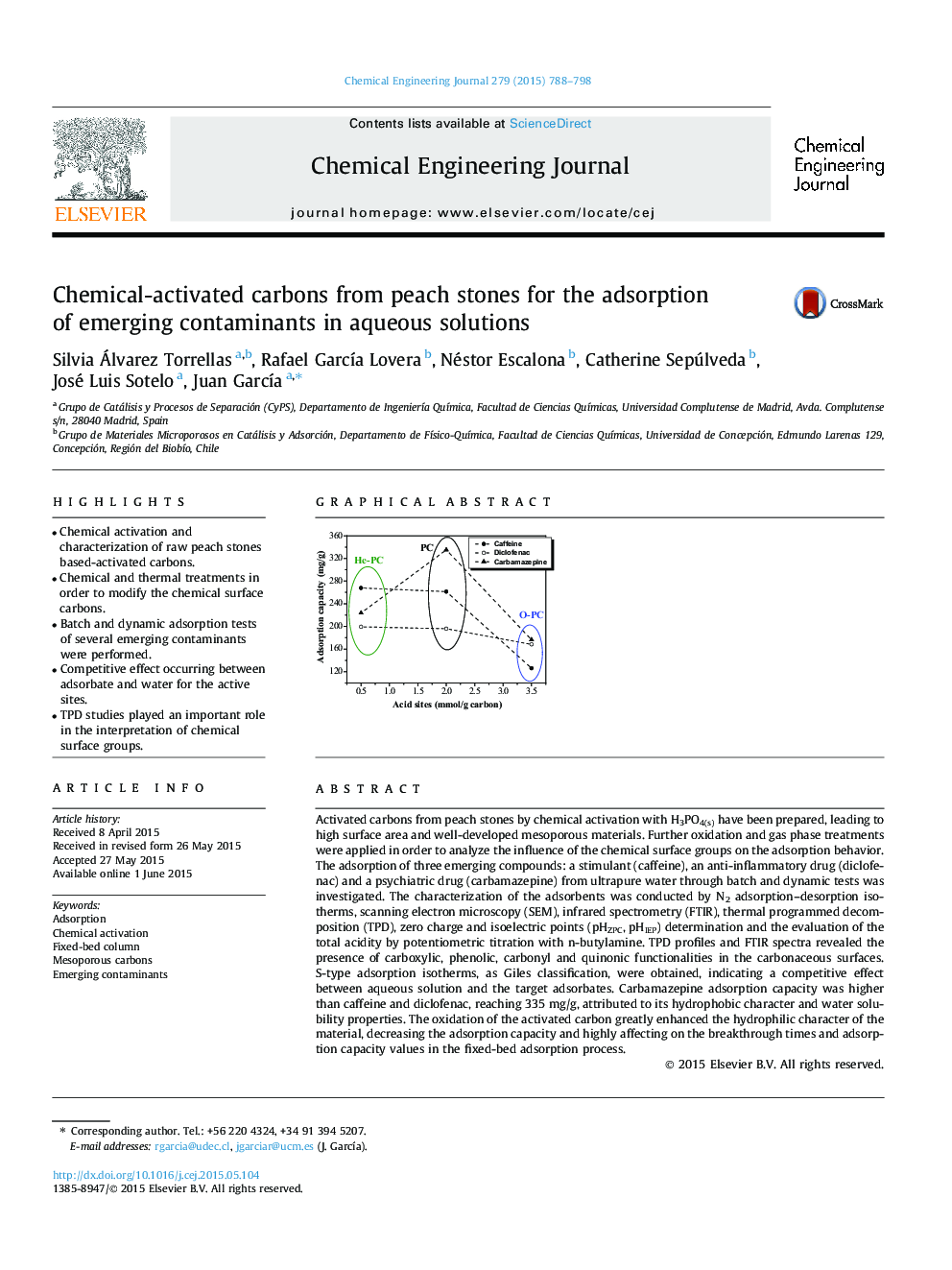| کد مقاله | کد نشریه | سال انتشار | مقاله انگلیسی | نسخه تمام متن |
|---|---|---|---|---|
| 146116 | 456362 | 2015 | 11 صفحه PDF | دانلود رایگان |
• Chemical activation and characterization of raw peach stones based-activated carbons.
• Chemical and thermal treatments in order to modify the chemical surface carbons.
• Batch and dynamic adsorption tests of several emerging contaminants were performed.
• Competitive effect occurring between adsorbate and water for the active sites.
• TPD studies played an important role in the interpretation of chemical surface groups.
Activated carbons from peach stones by chemical activation with H3PO4(s) have been prepared, leading to high surface area and well-developed mesoporous materials. Further oxidation and gas phase treatments were applied in order to analyze the influence of the chemical surface groups on the adsorption behavior. The adsorption of three emerging compounds: a stimulant (caffeine), an anti-inflammatory drug (diclofenac) and a psychiatric drug (carbamazepine) from ultrapure water through batch and dynamic tests was investigated. The characterization of the adsorbents was conducted by N2 adsorption–desorption isotherms, scanning electron microscopy (SEM), infrared spectrometry (FTIR), thermal programmed decomposition (TPD), zero charge and isoelectric points (pHZPC, pHIEP) determination and the evaluation of the total acidity by potentiometric titration with n-butylamine. TPD profiles and FTIR spectra revealed the presence of carboxylic, phenolic, carbonyl and quinonic functionalities in the carbonaceous surfaces. S-type adsorption isotherms, as Giles classification, were obtained, indicating a competitive effect between aqueous solution and the target adsorbates. Carbamazepine adsorption capacity was higher than caffeine and diclofenac, reaching 335 mg/g, attributed to its hydrophobic character and water solubility properties. The oxidation of the activated carbon greatly enhanced the hydrophilic character of the material, decreasing the adsorption capacity and highly affecting on the breakthrough times and adsorption capacity values in the fixed-bed adsorption process.
Figure optionsDownload as PowerPoint slide
Journal: Chemical Engineering Journal - Volume 279, 1 November 2015, Pages 788–798
